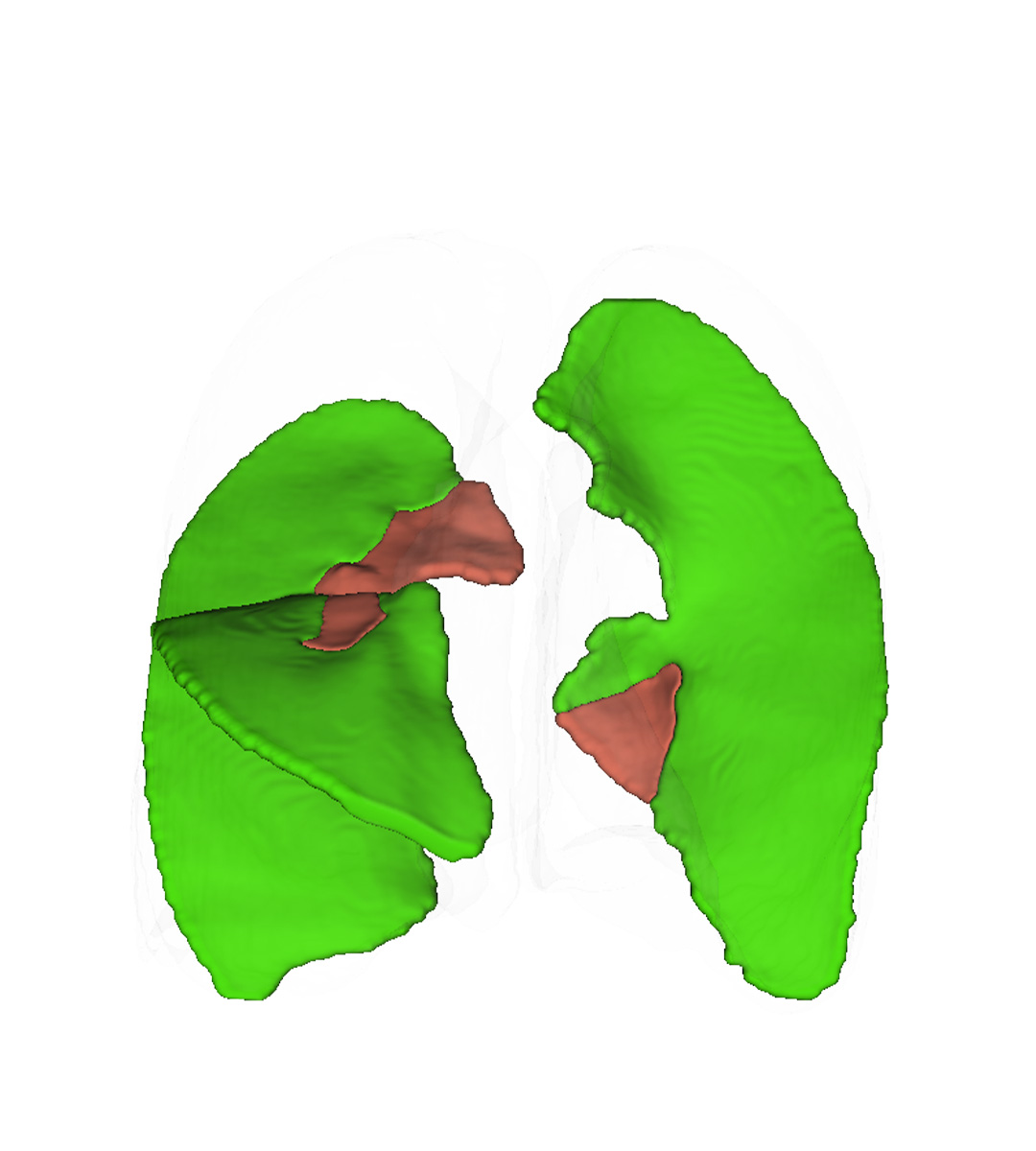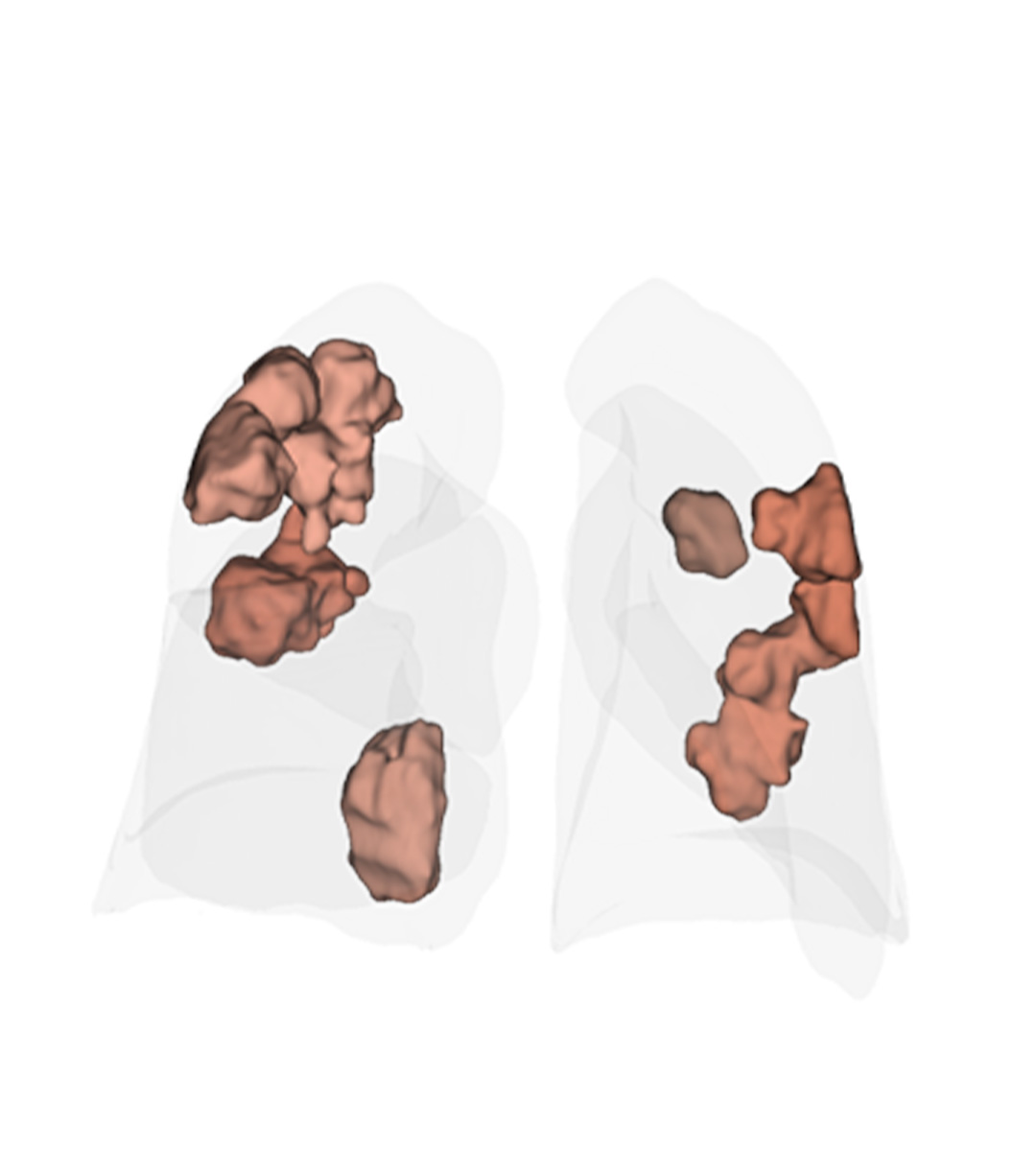Comprehensive assessment of parenchymal abnormalities
Parenchyma suite of AI-based LungQ® platform for analysis of lung images consists of an extended portfolio of measurements for precise quantification of parenchymal texture patterns on a lobar, segmental and sub-segmental level, including trapped air, low attenuation, lung density, fissure completeness, lung parenchyma volume, and more.
Lung parenchyma is intertwined with the bronchial and pulmonary vascular systems. A partially diseased lung typically causes an obstruction, leading to less ventilation at the parenchymal level, subsequently resulting in a reduction of perfusion to the diseased region.
Having the ability to combine parenchymal measurements with bronchial and vascular analysis (e.g. lung density and morphology of blood vessels, or segmentation of airway abnormalities within the lung parenchyma) we can provide comprehensive assessments to support physicians in evaluating multiple diseases such as pulmonary hypertension, bronchiectasis or mucolytic airway obstruction, and other conditions.
Selection of Thirona's major proprietary parenchymal measurements
Ventilation estimation of small airways (VERA)
VERA combines inspiratory and expiratory scans to automatically detect and quantify areas of hypo-ventilated and/or hypo-perfused lung volume. The power of this algorithm involves the ability to indirectly assess obstructive changes within the small non-visible airways.
Approximated chronic perfusion defect analysis (PXT)
PXT combines the information on parenchymal tissue with the pulmonary vasculature on CT and non-contrast CT. Providing automatic quantification of chronic perfusion defect estimation, PXT is a unique alternative to the SPECT-CT scan for chronic perfusion defect estimation.
Precision medicine applications
The automatic analyses of thoracic CT scans with Artificial Intelligence enable an accurate identification and precise quantification of abnormalities in the lung tissue such as emphysema, interstitial changes, pulmonary nodules and more, enabling localized treatment of lung cancer, COPD, ILD, bronchiectasis and other diseases.
Validation studies and publications
Ongoing external validation studies play a vital role in assessing the ability of our algorithms to perform consistently across diverse patient populations. See below a selection of research studies and publications that speak toward the robustness and clinical applicability of Thirona's parenchymal analysis.






